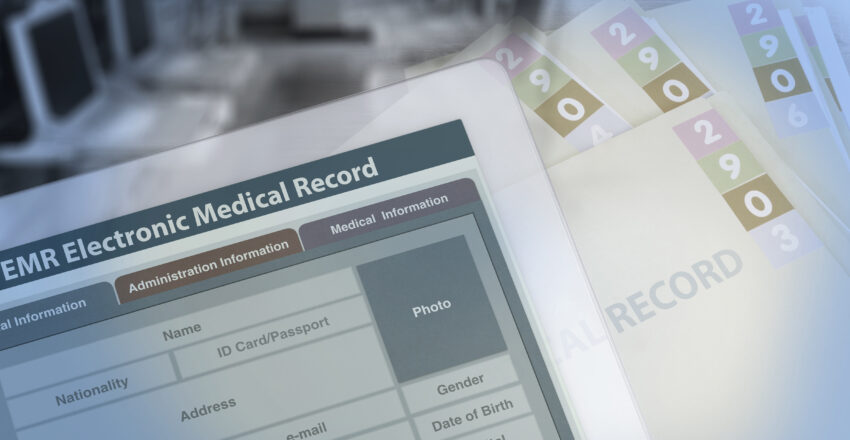
In addition to placing an unprecedented strain on healthcare systems around the world, the pandemic also cast a glaring light on the lack of interoperability among the institutions responsible for guarding the health — and health data — of patients. This was hardly a revelation: Healthcare systems are still relying on fax machines and CDs as other industries raced into a 5G future.
Even in hospitals with fully integrated electronic health records (EHRs), imaging data is often stored on different picture archives and communication systems (PACs) and not easily accessible. As the virus drove patients away from crowded hospitals and into independent diagnostic testing facilities, however, the cost of this gap in interoperability became painfully clear.
Interoperability Complements Patient-Centered Care
For patients, the reliance on non-hospital settings to perform vital scans and other procedures has been essential during the pandemic, but the inability of these sites to seamlessly communicate with other parts of the healthcare system has only siloed data even further and placed an undue burden on patients and healthcare staff.
Patients don’t feel important and cared for when they’re directed to different cities for imaging and surgery while also charged a fee to courier your scans between multiple clinics and hospitals. For providers, this separation of data and adherence to old technologies has led to costly delays that erode patient care and confidence in the system as a whole.
Promoting Interoperability Programs
Interoperability is not a new concept. In 2011, the Centers for Medicare & Medicaid Services (CMS) established the Promoting Interoperability Programs (formally named the EHR Incentive Programs) to encourage providers to adopt, implement, upgrade and successfully demonstrate meaningful use of certified electronic health record technology (CEHRT).
Currently in the third and final stage of the program, CMS focuses on evaluating hospitals on their meaningful use of CEHRT using four weighted objectives:
The third objective, provider to patient exchange, offers hospitals 40 points (the most of all objectives) if they can provide patients with electronic access to their health information. For imaging, that requires a patient-facing platform where scans and reports can be easily retrieved.
The Current State of Interoperability
Fortunately, patients are finally being put in control of their own health data courtesy of a provision in the 21st Century Cures Act that allows a person to access their electronic health data (with a few limitations) at no cost to them. This, coupled with an ONC info-blocking rule that mandates accessibility to personal health data, has increased the urgency of achieving a long-awaited interoperability across providers.
These new regulations represent a “paradigm shift for the industry,” according to Micky Tripathi, the current National Coordinator for Health IT. They will also soon give rise to an ecosystem of apps that will allow patients to have greater access to their health data than ever before. “It’s a significant difference from everything we’ve had in the past, in that it forces a culture change,” Tripathi said.
Lack of Standardized Data Slows Shift to Interoperability in Healthcare
Culture changes are seldom easy — especially when mandated — and facilitating seamless communication between healthcare systems is particularly difficult because the main source of this data, electronic medical records (EMRs), produce disparate data that doesn’t conform to any single standard, according to Health Catalyst.
Without a common terminology, or normalization of data to a unified standard, interoperability becomes a daunting task that is further complicated by the sheer amount of data produced by the facilities themselves. The number of data sources is also expanding exponentially, courtesy of wearable technology, smartphones and genomics, all of which place added stress on EMRs that weren’t designed to incorporate such information.
These challenges aren’t likely to be resolved any time soon and, in the meantime, the healthcare industry would only benefit from partnering with trusted vendors with proven success at bridging this gap in interoperability.
Overcoming Challenges in Imaging
PocketHealth, for example, offers a patient-centered approach to imaging records.
The platform fulfills CMS’s third objective in their push toward interoperability, allowing patients to view their full imaging reports and giving them the ability to share those records with their HCPs in a timely manner.
With Pockethealth, patients don’t have to wait on CD burning or physically travel or courier their scans to a clinic or hospital. Sharing records with medical teams can be done remotely and securely with bank-level encryption.
Pockethealth also seamlessly integrates with other EHR platforms and best of all, it’s network-agnostic so providers across different networks can maintain continuity of care. It grants patients and their providers immediate access to vital imaging data.
Aside from ensuring continuity of care and improving the patient experience, the ability to share the complete health picture of a patient enables a greater application of analytics that will lower the overall cost of care and improve treatment for future generations.
In addition to finally leaving fax machines and CDs in the past where they belong, the ability to share data through innovative third-party vendors powered by the cloud would enable the kind of personalized care that has largely eluded the healthcare industry while allowing patients to take their rightful place at the center of their own care journeys.
—
To learn more about improving the interoperability of imaging records, contact PocketHealth to request a demo.